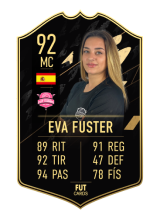Visual framing transcends mere symbolism by embedding icons within layered narratives that invite participation rather than passive recognition. Take cultural icons like Lady In Red—their power lies not only in visual prominence but in the intentional context that transforms them from static figures into voices of shared memory and identity.
From Icon to Narrative: The Evolution of Visual Framing Beyond Symbolism
Visual frames act as bridges between image and meaning, converting symbols into stories by embedding them in specific cultural, historical, or emotional contexts. For Lady In Red, a figure often reduced to a historical footnote, strategic framing reveals her as a living presence—her gaze, posture, and placement in a visual frame can evoke resilience, resistance, or remembrance. This shift turns the icon into a narrative anchor, where each visual choice—angle, lighting, surrounding elements—guides interpretation toward deeper engagement.
Community as Co-Author: How Visual Frames Enable Collective Memory
When visual frames are co-created with communities, they cease to represent— they become participatory dialogues. In projects like the reimagining of Lady In Red, local narratives, oral histories, and community input shape the frame’s composition, ensuring authenticity and resonance. This collaborative framing fosters **collective memory**, where public recognition evolves into identity reclamation. Visual frames thus transition from tools of observation to instruments of dialogue.
Designing for Agency: Framing Techniques That Elevate Marginalized Voices
Effective visual framing for marginalized figures relies on deliberate aesthetic choices: strategic composition places the subject at emotional center; bold color and scale amplify visibility; contrast and context deepen symbolic weight. For instance, using warm tones around Lady In Red contrasts with colder, institutional backgrounds, symbolizing personal strength amid systemic silence. Case studies from indigenous storytelling and feminist art illustrate how such techniques bridge intimate symbolism and universal human experience—turning private history into shared legacy.
Ethical Dimensions of Visual Framing: Responsibility in Iconic Representation
Visual framing carries profound ethical weight. Authenticity must balance interpretive power—oversimplification risks mythologization, while manipulation distorts truth. Ethical framing respects the subject’s history and agency, often achieved through transparency about context and collaboration with source communities. The parent article’s exploration of Lady In Red underscores how visual context prevents erasure and invites honest, accountable storytelling.
From Frame to Forum: Opening Pathways for Ongoing Dialogue
A well-crafted visual frame does not end with recognition—it invites reflection and conversation. Framing Lady In Red not as a relic but as a catalyst, designers embed **invitations to dialogue** through layered visuals that prompt questions: Who tells this story? Whose voice is centered? Linking to the full narrative at this article transforms a single image into a forum for community engagement.
Key Takeaway: Visual frames are not just containers for icons—they are dynamic spaces where culture speaks, memory is shaped, and voices are reclaimed.
| Element | Purpose |
|---|---|
| Color | Guides emotional tone and symbolic meaning (e.g., warmth for resilience, contrast for visibility) |
| Composition | Centers the figure, directs attention, and reinforces narrative focus |
| Scale | Amplifies presence, signaling importance and authority |
| Contextual background | Provides depth, preventing oversimplification and mythologization |
Visual framing, when rooted in community and intent, transforms icons into enduring voices—bridging past and present, individual and collective, recognition and dialogue.

